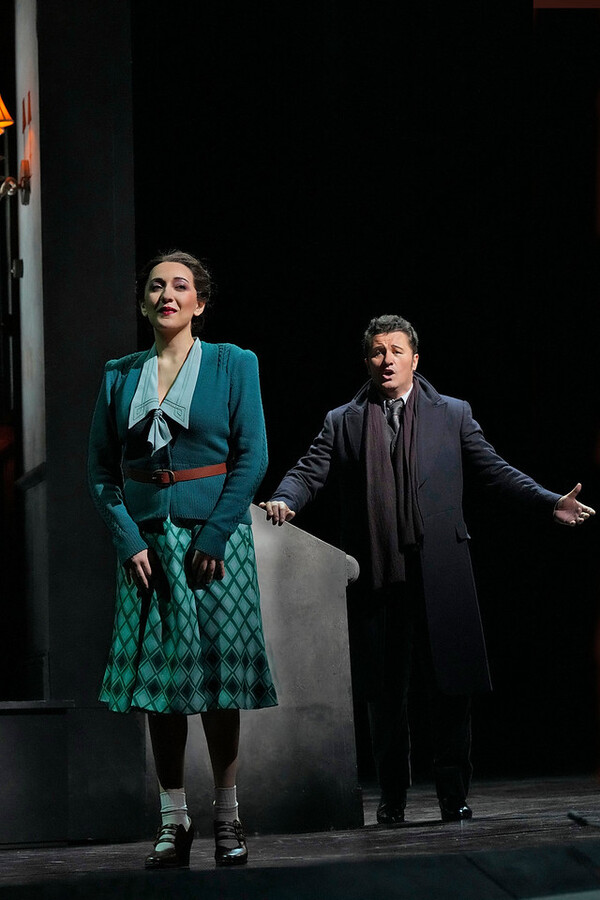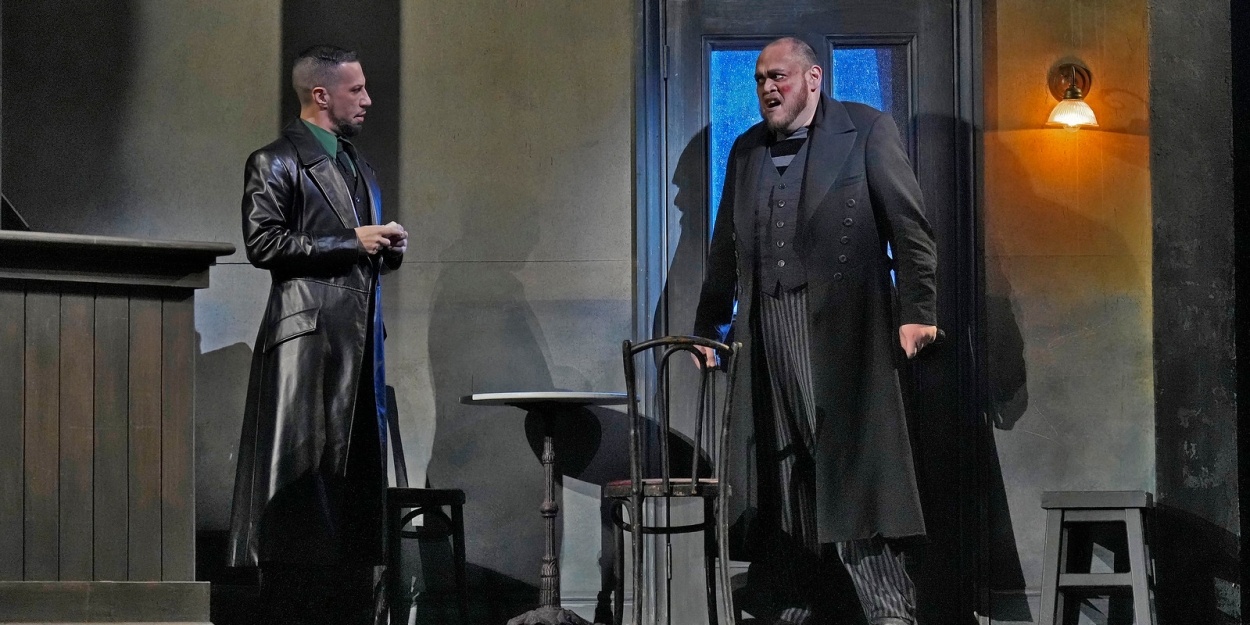 The Met rings in the new year with the gala premiere of a bold new take on Verdi's timeless tragedy from Bartlett Sher. The Tony Award-winning director resets the opera's action in 1920s Europe, with Art Deco sets by Michael Yeargan and elegant costumes by Catherine Zuber, themselves boasting a combined eight Tony Awards.
The Met rings in the new year with the gala premiere of a bold new take on Verdi's timeless tragedy from Bartlett Sher. The Tony Award-winning director resets the opera's action in 1920s Europe, with Art Deco sets by Michael Yeargan and elegant costumes by Catherine Zuber, themselves boasting a combined eight Tony Awards.
Baritone Quinn Kelsey, a commanding artist at the height of his powers, brings his searing portrayal of the title role to the Met for the first time, starring alongside soprano Rosa Feola as Gilda and tenor Piotr Beczała as the Duke of Mantua, with leading maestro Daniele Rustioni on the podium. A second run of performances in the spring features soprano Kristina Mkhitaryan, and tenor Stephen Costello, conducted by Karel Mark Chichon.
A dramatic journey of undeniable force, Rigoletto was immensely popular from its premiere and remains fresh and powerful to this day. The story, based on a controversial play by Victor Hugo, tells of an outsider-a hunchbacked jester-who struggles to balance the dueling elements of beauty and evil that exist in his life. Written during the most fertile period of Verdi's artistic life, the opera resonates with a universality that is frequently called Shakespearean.
Rigoletto contains a wealth of melody, including one that is among the world's most famous: "La donna è mobile." All the opera's solos are rich with character insight and dramatic development. The famous Act III quartet, "Bella figlia dell'amore," is an ingenious musical analysis of the diverging reactions of the four principals in the same moment: the Duke's music rises with urgency and impatience, Gilda's droops with disappointment, Rigoletto's remains measured and paternal, while the promiscuous Maddalena is literally all over the place. In the context of the opera, the merely lovely music becomes inspired drama.
Photo: Ken Howard / Met Opera
Anthony Tommasini, NY Times: And this was a compelling new "Rigoletto" - marking Bartlett Sher's eighth production for the Met since his debut in 2006. [...] If shifting the opera's setting from Renaissance Italy to 1920s Berlin was not entirely convincing, this was still a detailed, dramatic staging, full of insights into the characters. The chorus and orchestra excelled under the conducting of Daniele Rustioni, who led a lean, transparent performance that balanced urgency and lyricism.
George Grella, NY Classical Review: As a purely vocal matter this was a high-level performance. The Rigoletto for this epic run-the schedule extends into June-is baritone Quinn Kelsey, a veteran of the Met stage. With soprano Rosa Feola as his daughter Gilda, and tenor Piotr Beczała as the Duke of Mantua, the principals made a trio that was vocally inspired if slightly lopsided dramatically.
Richard Sasanow, BroadwayWorld: Sher's concept for the production was more of an idea than a worked out solution and that trickled down to the look of the production. I didn't think that Michael Yeargan's scenic design--basically a revolving unit set that helped the action move along fluidly--was one of his better efforts, sometimes blocking the action, sometimes revolving unnecessarily. I found the scenes in Rigoletto's home and Sparafucile's (very cramped) lair rather underdesigned and dull. Donald Holder's lighting was a useful addition, however, to enlightening Yeargan's work. Catherine Zuber's rich costumes served the production's concept well.
Heidi Waleson, WSJ: Germany in the 1920s, but there is little in Michael Yeargan's set or Catherine Zuber's costumes that conveys a strong sense of period, or why that period is thematically significant. The set, a giant cube, rotates on a turntable. In the first scene, courtiers wearing "old Hollywood" slinky dresses, uniforms or black tie spill through tall, narrow doors on all sides until the set comes to a stop, revealing a huge reception room with gold pillars and blood-red walls. Subsequent rotations take us to Rigoletto's multistory house and the assassin Sparafucile's den of iniquity-both generically impoverished, though the latter has a bar setup in the center. The set also turns in midscene on occasion. This supplies some drama, but more often distraction, upstaging the singers at critical moments.




